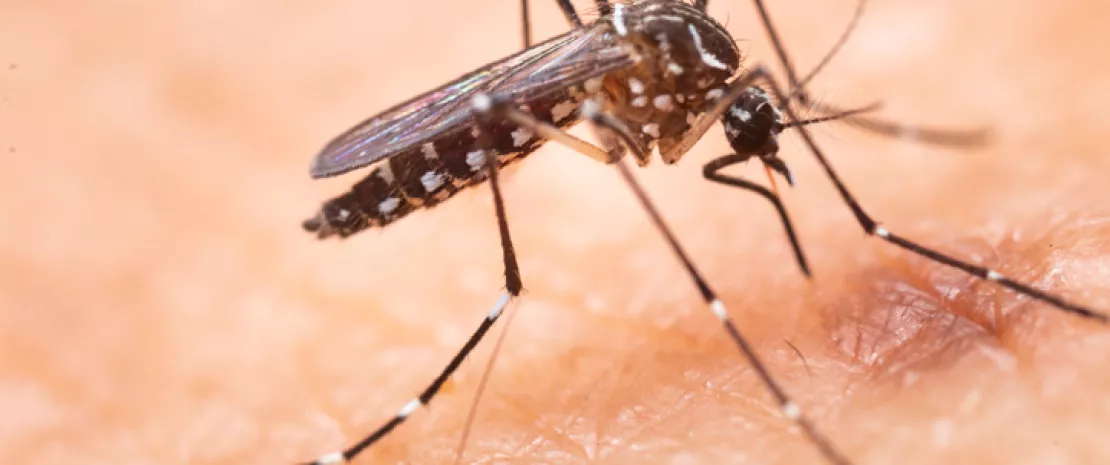Tiger mosquitoes (also known as Aedes albopictus) originate from Southeast Asia but have quickly spread to all continents. Only the Antarctic has been able to resist to this invader! The female’s ability to transmit no less than 19 viruses (including dengue, chikungunya, zika) makes it a true health scourge against which urgent action is needed.
Attracted by some skins
We know that tiger mosquitoes are attracted, among other substances, by human sweat. But not any sweat: some people are systematically stung while others are totally ignored by these blood suckers! This injustice could be due to the concentration of some volatile components in the sweat (lactic acid, acetone...) which are responsible for the skin odor. However, these components are secreted both by sebaceous glands and bacteria from the cutaneous microbiota. The composition of the latter could thus be at the source of the attraction of tiger mosquitoes towards some individuals.
Variable power of attraction
A French team wanted to identify the components associated to the power of attracting or repelling female tiger mosquitoes in bacteria from the skin microbiota of 12 volunteers. First, they discovered that three bacteria naturally present in our skin flora attract insects (Staphylococcus saprophyticus, Klebsiella rhizophila and Kylococcus sedentarius), while two others repel them (Corynebacterium tuberculostearicum and Staphylococcus hominis). Then they observed that two molecules were associated to attracting species, but only when they were secreted in high quantities; in lower quantities they were, on the contrary, associated to one of the two repelling bacteria.
New odor-baited traps
According to the authors, these discoveries could open the way to the development of new prevention methods of tiger mosquito bites intended to stop the growth of “attractive” bacteria or modify their ability to produce volatile components which attract insects.












